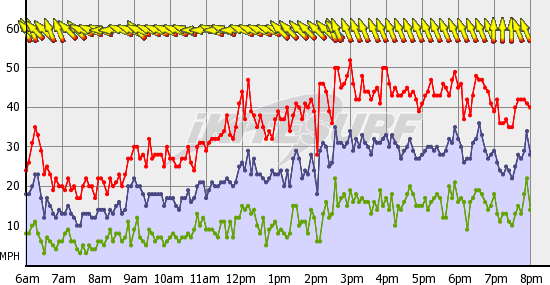The goal is not to have too large a kite up in excessively strong or unstable wind. Squalls change wind routinely, may turn it off, boost way up, drop it down again, change directions violently. Tropical systems frequently have numerous squalls over large areas and they have low to no wind areas in certain quadrants at times. Kites can power up in squalls, stall, power up again, create tangle, lofting hazards or perhaps just leave you offshore without power or too much. We have more violent squalls in South Florida than many other areas. Then again, I keep seeing them in other parts of the world as well, perhaps less commonly. Still, they have harmed people in many areas of the world too.
How close is too close to a squall or tropical systems containing squalls? How do you know in advance what a squall is going to do to the wind and at what point and time?
Kevin waited too late as did the man a few days before in Brazil, the guy lofted in the Great Lakes caught on film, as did the guy lofted 800 ft. in Cabarete, as did the guy lofted 1750 ft. in Portugal, as did the guy in Okinawa, the guy in South Korea, the kiteboarder in Russia years back, the rider tea bagged across the beach and dropped head first from a palm tree into a coma in Pompano, the five guys lofted simultaneously in Miami, the same number in France, the three guys in Sweden with a rider from both France and Sweden suffering paralysis, the rider that broke his neck in Pompano, the rider who suffered a terminal brain injury in Mauritius, the guy lofted 75 ft. high in Utah, the rider lofted in Connecticut, the rider lofted 450 ft. into a building in Denmark, the rider lost in a storm in Hungary, my 165 ft. lofting in Boca, a pro rider in Delray, the snowkiteboarder in Alberta ... and more. Many died in that list though not all fortunately. How many more have been seriously injured, messed up gear or scared the hell out of someone else nearby in squalls?
We need to lead by example. What example should we give? Kevin claims to be an instructor, what example should he give in the future? What do schools tell their instructors to do with regard to squalls? There are high wind issues too with fronts but lets focus on squalls for now.
Years back, I advised staying out of all tropical systems. Since then we've been talking about finding large enough clear holes IF they exist for sufficiently experienced kiteboarders. How large a hole do you need? Riders choice, considering that small partial list above we had better choose well.

These feeder bands may be moving 50 mph overground as do the numerous squalls they contain in TS Fay. The bands keep forming pretty much continuously at short intervals sweeping in from the west. The holes open and close rapidly and even erratically in this case.

This is a snapshot of winds at one location during Fay. What size kite do you rig and how long will that size be appropriate for conditions (5 to 52 mph?)? How do you assure yourself you won't get lofted, have your kite stall, then loft you, stall causing yourself to get tangled then relaunch looping off into the distance intermittently lofting you? These things happen.
I advise people not to go out in or come too close to squalls and to take particular care in tropical systems which may have tons of squalls. What do you tell your students and instructors to do in this regard Brad? What should they do differently in tropical systems than in strong cold fronts? What do others do in regard to squalls, aside from perhaps largely ignore them?